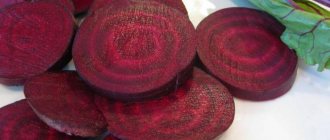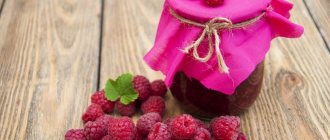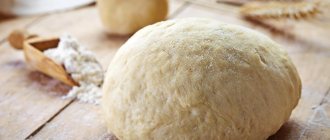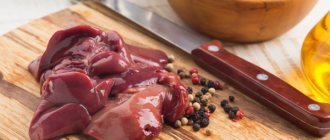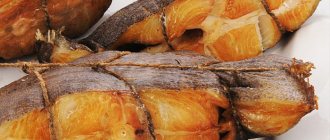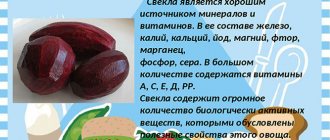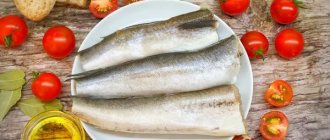Turkish peas are tasty and healthy, used boiled, fried and sprouted. Its uniqueness lies in its rich set of nutrients and a significant change in calorie content depending on the composition of the dish. Fried chickpeas have a very high value, but they are used as an airy delicacy, which means they eat little. Sprouted chickpeas are recognized as the most useful type. It supplies the body with vitamins, a whole range of microelements and amino acids at a very low calorie content, which is ideal for dietary nutrition.
What is important to consider when cooking chickpeas
Many people try to cook chickpeas infrequently or completely exclude them from their diet due to the fact that this product, like all legumes, causes flatulence.
To avoid gas formation in the intestines and a feeling of heaviness after eating, it is important to follow a few simple rules when preparing chickpeas. Before using chickpeas for cooking, be sure to soak the beans for at least 8-12 hours. It is best to let the chickpeas stand in cold water for a day - this way you won’t even need to subject them to additional heat treatment and cook them.
In addition, many chickpea recipes include various spices and herbs (for example, ginger, turmeric, black pepper, coriander, rosemary and curry). This is necessary not only to create a unique taste, but also for better digestion and absorption of chickpeas, as well as to prevent bloating.
Reviews
Svetlana, 28 years old, Kazan : I was afraid to try grueling diets, but I wanted to lose a few extra pounds, especially for the summer season. I stopped at a fasting day with chickpeas. I liked that it does not require constant hunger strike. You can eat small portions and still lose weight.
A small pot of soup made from chick peas, pumpkin and a small onion was enough for the whole day. It tastes good and, most importantly, is nutritious. There were no restrictions on liquid. You can drink fruit drinks and water. Thus, without much effort, the body felt light, and the scales began to show 1.5 kilograms less.
Maria, 37 years old, Nizhny Novgorod : In order to correct your figure, it is good to add chickpeas to various dishes. This must be done within a week. It is important to eat light vegetable salads every day and drink plenty of water. At the same time, you should completely give up sweet, white bread and buns. All dishes must be boiled, stewed, baked. Frying food is not allowed. With this diet, it is enough to eat chickpeas 2 times a day. After a week I managed to lose 4 kilograms. The result is good, considering that I didn’t have to go hungry and give up my usual foods.
Harm and contraindications
In addition to its beneficial properties, chickpeas have contraindications for diseases:
- thrombophlebitis;
- cystitis - inflammation of the bladder;
- gout, as chickpeas increase the formation of uric acid;
- ulcerative formations of the stomach and intestines;
- exacerbation of gastritis.
Attention! An absolute contraindication for eating chickpeas is an allergy to cereal protein. Turkish peas cause increased gas formation. A person with digestive system problems should limit it in their diet. A nursing woman should avoid chickpeas if the baby is not yet 4 months old.
With all the advantages of the product, there are still some disadvantages. Chickpeas are not perfect, and not everyone can eat them and not always.
It is definitely worth considering that the presence of any chronic diseases that require a special diet is a reason to consult with a specialist about the permissibility of including chickpeas in the diet.
There are also a number of contraindications for consuming these peas:
- the presence of individual intolerance to this product;
- diseases of the intestinal tract, flatulence;
- liver and pancreas diseases;
- bladder ulcer and cystitis.
The main contraindications of chickpeas are related to the fact that the product promotes increased gas formation. And if there are diseases of organ systems for which this symptom can intensify or provoke harmful consequences, it is recommended to exclude chickpeas and other legumes from the diet. Saturation with vitamins and microelements is beneficial, which is good for the body.
History of popularity! Medium-sized light brown beans are now known to gourmets and connoisseurs of tasty and healthy food around the world! Chickpeas are considered an eastern legume crop. It is valued in India, Turkey, Italy, Israel and other countries. Chickpea production began about 7,500 years ago. The homeland of chickpeas is the Middle East.
However, it is worth noting that chickpeas are the basis from which a huge variety of dishes are prepared.
Thanks to its rich composition, nakhat can not only become an original dish on the table, but also have a healing effect on the human body. It should be noted that the calorie content of chickpeas is quite low, but the nutritional value, on the contrary, is high.
When losing weight
Thanks to the large amount of fiber and nutrients in the grains, chickpeas can provide a feeling of fullness from a fairly small portion (100–150 g), which is very important for people who want to lose weight. The protein contained in the product is easily absorbed by the body. However, peas do not contain saturated fat.
Important! For vegetarians, nakhat is a complete substitute for meat products.
Fiber also helps remove toxins from the body (absorbs like a sponge) and improves intestinal motility. Peas are a low glycemic index food. All this together makes chickpeas a dietary food that helps improve metabolism and get rid of extra pounds without a significant deficiency of vitamins and microelements.
Chickpeas are beneficial for both men and women. The presence of a large amount of protein and an amino acid called methionine contributes to the rapid growth and restoration of muscle mass during physical activity. Folic acid helps men improve sperm quality (increases the number and motility of sperm), promotes cell renewal in the body, skin rejuvenation and improves pregnancy in women.
Iron helps restore hemoglobin levels during blood loss during childbirth, menstruation, and feeding. The presence of a large amount of potassium helps chickpeas remove excess fluid from the human body, thereby eliminating swelling. This means that chickpeas have diuretic properties.
If you take a decoction of chopped chickpeas with radish, celery and almond oil, you can prevent the formation of sand and stones in the bladder. Still, people with bladder problems or kidney stones should discuss with their doctor how and how much chickpeas can be consumed, so as not to unknowingly cause harm to themselves.
For the liver
Lamb peas have a beneficial effect on the liver, which cleanses the human body of toxins. The presence of a large amount of fiber in the product also allows you to remove harmful substances, which significantly facilitates the work of the liver.

A large amount of selenium inhibits the development of cancer cells and hepatitis B and C viruses, thereby protecting the liver from disease. The overall positive effect of nahat on the body has a positive effect on the functioning of all organs.
Eating chickpeas can reduce the amount of cholesterol in the blood. Peas are also useful for lowering blood pressure and have a vasodilating effect. High levels of potassium, magnesium and vitamins C and B6 help maintain heart health.
A large amount of antioxidants in lamb peas helps strengthen the walls of blood vessels. The presence of polyunsaturated fats has a beneficial effect on the functioning of cells of the cardiovascular system as a whole.
Beneficial features
Easterners, prone to poetic comparisons, call lamb peas “golden grain” for a long list of important health properties. When you regularly turn it on in the menu, you observe:
- lowering sugar and cholesterol levels;
- improvement of vascular condition;
- stabilization of blood pressure;
- splitting and removal of waste;
- acceleration of bile circulation;
- disappearance of edema and congestion in the body;
- strengthening immunity;
- increasing overall tone, performance, brain activity;
- normalization of liver functions;
- improving the functioning of the gastrointestinal tract.
Such a powerful effect, affecting all vital systems, could not go unnoticed by nutritionists. A natural continuation of positive changes is the acceleration of metabolic processes, weight loss and consolidation of the results obtained. An accompanying bonus is the improvement in the condition of the skin, hair and nails after removing waste and toxins. The most valuable quality was the product’s ability to create a feeling of long-term satiety in small portions. A large amount of fiber takes a long time to digest, gradually being converted into energy. At the same time, chickpeas improve the functioning of the gastrointestinal tract, eliminating digestive problems.
How to use
Nokhut, like all legumes, is a heavy food. It takes 4 hours for chickpeas to be completely processed. It is better to eat it at lunchtime so that it has time to digest before nightfall.
In order not to provoke fermentation and discomfort in the intestines, do not wash down the pea dish with water. It dilutes the concentration of gastric juice and enzymes.
It is not recommended to combine chickpeas with other protein foods. To reduce bloating, it is useful to combine it with carminative herbs - dill, fennel.
For medicinal purposes

Initially, Turkish peas were included by experts in the Mediterranean diet to prevent heart and vascular diseases. During the research process, other medicinal properties of the product were revealed.
Chickpeas for weight loss
During a diet, the main danger lies in the loss of essential vitamins and microelements. Lamb peas replenish these losses without affecting the result of the diet, reducing the feeling of hunger. Boiled or stewed chickpeas without oil and meat have the lowest calorie content. Bean sprouts are a valuable addition to fresh vegetable salads. They contain an increased amount of vitamins, and microelements become easily digestible. In national oriental cuisines, the most famous chickpea dish is hummus. In addition to peas, you will need:
- olive oil;
- garlic;
- curry;
- salt and pepper;
- sesame;
- lemon juice.
Thoroughly washed mutton peas are poured with water in the evening and cooked for 2 hours over very low heat in the morning. The remaining liquid is drained into a separate container. Spices are lightly heated in a dry frying pan and ground in a blender, like garlic. Then boiled chickpeas, butter, lemon juice are added to the mixture in portions and whisked vigorously until smooth. After which the finished dish is kept in the refrigerator for 2-3 hours.
Chickpeas are added to soups, porridge is used as a side dish for assorted mushrooms, baked chicken breast, boiled and stewed fish. When losing weight, it is recommended to eat 3-4 tbsp at one time. spoons of peas in any form, the daily norm does not exceed 300 grams. Turkish peas add variety to your diet, replenish the deficiency of nutrients and help you gain an attractive figure.
Muesli for weight loss: benefits and application
Diets high in fiber, low in energy density and glycemic load, and moderate in protein are generally considered to be particularly important for weight control. In the NHANES 2003-2010 database, chickpea/hummus consumers were 53% less likely to be obese and 51% less likely to have elevated glucose levels.
O'Neil CE, Nicklas TA, Fulgoni VL Chickpeas and hummus are associated with better nutrient intake, diet quality, and levels of some cardiovascular risk factors: National Health and Nutrition Examination Survey 2003–2010. J. Nutr. Food Sci. 2014;4:1.
This may be due in part to other healthy lifestyle patterns that might be expected in people having higher intakes of legumes such as chickpeas (the NHANES database is observational data and cannot assess causality). Consuming legumes, either by choice or as part of a dietary pattern, has also been associated in epidemiological studies with decreased body weight, decreased waist circumference, and the risk of overweight and obesity.
Sichieri R. Dietary patterns and their associations with obesity in the Brazilian city of Rio de Janeiro. Obes. Res. 2002;10:42–48. Newby PK, Muller D., Hallfrisch J., Andres R., Tucker KL Food patterns measured by factor analysis and anthropometric changes in adults. Am. J. Clin. Nutr. 2004;80:504–513. Roberts SB, Hajduk CL, Howarth NC, Russel R., McCrory MA
Best Recipes
Chickpeas are a versatile food that can be added to a wide variety of dishes. It's good to experiment with it.
Cutlets made from chickpeas are delicious. To do this, grind it to make porridge, add 2 cloves of garlic, carrots, onion and lemon juice. All vegetables must be chopped. After stirring, add 2 tbsp. l. flour, a little sugar and nutmeg. If desired, the dish can be supplemented with a small amount of soy sauce. The resulting mass is formed into cutlets, fried in a frying pan, and baked in the oven.
You can also make Lenten sweets from chickpeas. Pre-cooked peas are mixed with 3 tbsp. l. honey, vanilla, nut butter. Grind in a blender. Add 2 tbsp. l. dark chocolate, pre-chopped on a fine grater. From the resulting mass, roll candies of the desired shape. Most often these are small balls. Put it in the freezer. It’s good to stick a toothpick into each of them. Then the treat will be convenient to eat.
Chickpeas can be used to make delicious pancakes. Boil pre-soaked and washed peas. Grind in a blender, adding 2 carrots, half an onion, and an egg to the mixture. It is best to grease the frying pan with olive oil rather than vegetable oil. Fry until golden brown. Salt and pepper to taste.
Turkish nuts can be baked. Boiled chickpeas are mixed with agave syrup, paprika, olive oil, salt and pepper. Cover a small baking tray with baking paper and place the resulting mixture on it. Bake in the oven for 45 minutes at 180 degrees. You can eat the dish on its own or with baked vegetables.
Peas make excellent salads. It is pre-soaked and then boiled. At the same time, bake the red pepper in the oven for 15 minutes. Peel the vegetable from the skin and seeds. For the salad you will need boiled breast and half an avocado. All ingredients are seasoned with olive oil.
You can prepare a salad with the addition of pine nuts. To do this, grind a clove of garlic, a bunch of parsley, cilantro, a little lemon juice, pepper and salt in a blender. Add 2-3 tablespoons of boiled chickpeas to the resulting mixture. The salad should sit for 15 minutes. You can add vegetables and other greens to it.
Puree soup is tasty and nutritious. The peas need to be boiled. Remove the skin from 5 tomatoes and fry with a small amount of green onions. You will get tomato paste. Without removing from heat, add 2 chopped potatoes and 250 grams of chickpeas to the mixture. Boil. For greater homogeneity, the dish can be ground in a blender. Add salt and pepper to taste.
Chickpeas with vegetables and basil
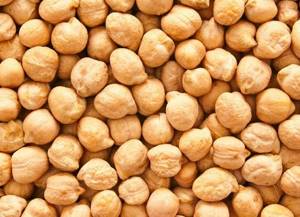
This cool recipe with the simplest ingredients is suitable for both every day and a large family dinner. We simply love this dish for its amazing warming taste!
- Chickpeas 1 tbsp.
- Olive oil 2 tbsp. l.
- Bell pepper 1 pc.
- Chili pepper 1/2 pcs.
- Onion 1 pc.
- Garlic2-3 cloves
- Tomatoes 3 pcs.
- Fresh chopped basil leaves 3-4 tbsp. l.
- Fresh chopped parsley 3-4 tbsp. l.
- Salt, pepper to taste
Nutritional and energy value of chickpeas
Central Asia is considered its homeland. Chickpea is a herbaceous plant belonging to the legume family. The cereal is known as Turkish, lamb, and Volozhsk peas. Due to the similarity of taste with walnuts, it acquired the name of the same name.
Turkish peas are one of the most studied crops in recent times. Interest in it is fueled by the growing desire of people to lead a healthy lifestyle. The basis of this direction is proper nutrition.
For a nutritionist, an important indicator of any product is its energy value. It reflects the amount of energy that the body receives from the product during digestion. Composition of 100 grams of boiled chickpeas:
- protein 8.8 g;
- fat 1.8 g;
- carbohydrates 18.1 g;
- chickpeas, the calorie content of boiled cereal is 129 kcal, and dry beans - 376 calories.
Doctors have found that in Mediterranean countries, life expectancy is longer and there are fewer chronic diseases. This fact served as a trigger for the development of a diet that reduces the risk of heart disease, the leading cause of death on the planet. Chickpeas have a worthy place in the diet.
How followers of a healthy lifestyle eat chickpeas
It is generally accepted that in order to preserve all the benefits of plant foods, it should not be spoiled by heat treatment. Chickpeas belong to the legume family. Therefore, a reasonable question arises: how can you eat chickpeas without boiling and frying? Very simple! There are at least two options for preparing this herbal product without thermal influence. For example, you can germinate legumes. In this embodiment, food not only does not lose value, but, on the contrary, acquires healing properties. In addition, sprouted chickpeas have a spicy, delicate taste that appeals to connoisseurs of tasty and nutritious food. The second option is soaking! By soaking peas for a long time, you can easily get a tasty and healthy base for preparing rich and colorful dishes. Please note that this variety of legumes must be sprouted and soaked correctly. To achieve the desired “condition” at which you can safely eat chickpeas, you will need to follow several tricks, which we will discuss in a separate article.
What else is made from chickpeas?
There are a huge number of dishes in the world that contain chickpeas. Many dishes consist entirely of chickpeas.
This ingredient is used to prepare flour, soups, cereals, candies, and salads. Chickpeas are added to mixes and side dishes are made from them.
How to select and store
To get tasty and healthy food, you should choose chickpeas wisely. Everything is extremely simple here! The peas should be dense, smooth, and evenly colored. Color - from light brown to slightly darker shades (depending on the variety and degree of ripeness). You should not buy a product if you can see a lot of faded spots. An unpleasant odor and the presence of plaque are signs that the chickpeas have gone bad. The beans should be approximately the same size.
Chickpeas can be stored for a long time (up to 12 months), if the correct conditions are provided for the storage period. These peas need darkness, lack of humidity and a temperature range of 0 to 5 degrees. Under such conditions, peas will not spoil for a long time and will retain their quality.
This is how versatile and healthy chickpeas are! The product has become popular and easily available in the retail space of our country. The price of the product varies depending on the country of production, brand and variety. But overall, this is an inexpensive, healthy and very tasty plant-based food option!
Positive effects of chickpeas on gastrointestinal health
Dietary fiber is the indigestible part of plant foods containing poly/oligosaccharides, lignin and other plant substances. Dietary fiber is classified into soluble and insoluble. Soluble fiber is absorbed slowly in the colon, while insoluble fiber is indigestible and promotes intestinal motility.
Like other plant foods, legumes and legumes, adding chickpeas and/or hummus to your diet significantly increases your fiber intake. Human studies of chickpeas report overall improvements in gut health, characterized by increased frequency of bowel movements, ease of bowel movements, and softer stool consistency on a chickpea diet compared to a regular diet.
Murty CM, Pittaway JK, Ball MJ Chickpea supplementation in an Australian diet affects food choice, satiety and bowel health. Appetite. 2010;54:282–288. Nestel P., Cehun M., Chronopoulos A. Effects of long-term consumption and single meals of chickpea on plasma glucose, insulin, and triacylglycerol concentrations. Am. J. Clin. Nutr. 2004;79:390–395.
Chickpeas are especially valued for the following list of healing properties:
- cleanses the body of toxins, has an antioxidant effect;
- strengthens the immune system, stabilizes metabolism;
- improves the process of hematopoiesis, strengthens the walls of blood vessels;
- has a beneficial effect on the respiratory system;
- helps preserve and improve vision;
- improves the digestion process;
- prevents the development of atherosclerosis;
- helps level out the glycemic profile in diabetes mellitus;
- nourishes joints and muscle tissue.
And this is not a complete list of the advantages of chickpeas, for which this product is so valuable in a healthy diet. There are literally so many advantages that they overshadow the disadvantages that still exist.
Properties of chickpeas for the human body
Lamb peas are considered a useful plant containing a sufficient amount of useful elements in its composition. But, despite the abundance of vitamins, chickpeas have their contraindications, which can cause harm to the body.
Benefit
What useful properties can be identified:
- Strengthening the cardiovascular system, preventing heart attacks and strokes.
- Restoring blood pressure, relieving symptoms of hypertension.
- Strengthening blood vessels, vein walls, relieving symptoms of varicose veins.
- Reducing blood glucose levels, helping patients with diabetes.
- Improving stomach function, relieving cramps, abdominal pain.
- Cleansing the liver, removing toxins and waste from the body.
- Removing bacteria and parasites from the body.
- Restoration of metabolic processes, positive effect on fat burning. Chickpeas for weight loss are the most suitable product. It does not cause adverse reactions from the gastrointestinal tract.
- Preventing the appearance of cancerous tumors.
- Improving the functioning of the gallbladder, preventing the development of gallstones.
- Increasing performance, strengthening the muscular system.
- Increases immunity, prevents the development of vitamin deficiency.
- Stimulates hemoglobin production, blocks symptoms of anemia
Benefits of chickpeas for cancer
In a controlled dietary intervention study, it was shown that isoenergetic addition of chickpeas to a wheat-based diet resulted in significant reductions in serum total cholesterol and low-density lipoprotein cholesterol (LDL-c). Likewise, chickpea consumption significantly improved total and LDL cholesterol control in a 20-week crossover study of individuals with elevated CVD risk factors.
Pittway JK, Ahuja KD, Cehun M., Chronopoulos A., Robertson IK, Nestel PJ, Ball MJ Dietary supplementation with chickpeas for at least five weeks results in small but significant reductions in serum total and low-density lipoprotein cholesterols in adult women and men. Ann. Nutr. Metab. 2006;50:512–518. Pittaway JK, Robertson IK, Ball MJ
A recent meta-analysis of randomized controlled trials found that a diet rich in legumes lowers LDL levels. Systolic blood pressure was reduced in overweight and obese individuals after eating legumes for eight weeks. Epididymal adipose tissue lipoprotein lipase and hepatic triacylglycerol lipase activities were normalized in rats on a high-fat chickpea-supplemented diet, which is likely due to some extent to lower leptin and lipoprotein lipase mRNA levels in epididymal adipose tissue.
Bazzano LA, Thompson AM, Tees MT, Nguyen CH, Winham DM Non-soy legume consumption lowers cholesterol levels: A meta-analysis of randomized controlled trials. Nutr. Metab. Cardiovasc. Dis. 2011;4:94–103. Mollard RC, Luhovyy BL, Panahi S., Nunez M., Hanley A., Anderson GH Regular consumption of pulses for 8 weeks reduces metabolic syndrome risk factors in overweight and obese adults. Br. J. Nutr. 2012;108(Suppl. 1):
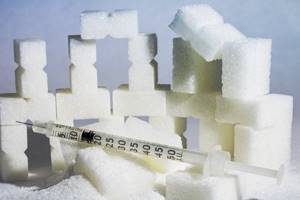
S111–S122 Augustin LS, Chiavaroli L., Campbell J., Ezatagha A., Jenkins AL, Esfahani A., Kendall CW Post-prandial glucose and insulin responses of hummus alone or combined with a carbohydrate food: A dose-response study. Nutr. J. 2016;27:13.Yang Y., Zhou L., Gu Y., Zhang Y., Tang J., Li F., Shang W., Jiang B., Yue X., Chen M.
Soluble fiber is well known for its positive effects on total cholesterol and LDL cholesterol, which are validated biomarkers of cardiovascular disease. Some studies have also shown the benefits of increased plant protein intake on CVD. The higher dietary fiber and protein content of chickpeas, as well as possibly the presence of enzyme inhibitors and “antinutrients” such as tannins present in chickpeas, may also partly explain these results.
Halton TL, Willett WC, Lui S. Low-carbohydrate-diet score and risk of coronary heart disease in women. N.Engl. J. Med. 2006;355:1991–2002.
Butyrate is an essential short-chain fatty acid obtained from diets containing chickpeas. A number of studies report that butyrate can suppress cell proliferation and induce apoptosis, which may reduce the risk of colorectal cancer. Several other dietary bioactive compounds, such as lycopene, biochanin A and saponins, which reduce the risk of certain types of cancer, are also present in chickpeas and hummus.
A study by Murillo et al. showed a 64% suppression of azoxymethane-induced aberrant cryptic lesions in rats fed a diet supplemented with 10% chickpea flour. This study found that the high concentration of saponins in chickpea flour may partly explain the reported reduction in lesions.
In addition, dietary inclusion of chickpea seed fiber has been shown to reduce the toxic effects of N-nitrosodiethylamine on lipid peroxidation and antioxidant potential. Although there is no data specific to hummus in this area, an epidemiological study found that consumption of legumes was also associated with a reduced risk of certain types of cancer.
Murillo G., Choi JK, Vioque J., Pan O. Efficacy of garbanzo and soybean flour in suppression of aberrant crypt foci in the colons of CF-1 mice. Anticancer Res. 2004;24:3049–3056. Mittal G., Vadhera S., Brar APS Protective role of chickpea seed coat fiber on N-nitrosodiethylamine-induced toxicity in hypercholesterolemic rats. Exp. Toxicol. Pathol. 2009;61:363–370. doi: 10.1016/j.etp.2008.07.006.
Summarize
- Chickpeas are very good for health.
- It contains large amounts of vitamins, minerals, fiber and protein. This gives it most of its benefits, which range from weight loss to blood sugar control.
- Including chickpeas in your diet on a regular basis will keep you healthy and may reduce your risk of developing chronic diseases such as heart disease and cancer.
- It is inexpensive and easy to find in most grocery stores. You can include it in various dishes, including as a substitute for meat.
The benefits of hummus
In Western culture, chickpeas are consumed primarily in the form of hummus. Traditional chickpea hummus is a dip or spread made from boiled chickpea puree mixed with tahini, olive oil, lemon juice and spices. There are many other forms of hummus or bean dips on the market labeled as hummus that do not follow the traditional hummus recipe, each containing unique ingredients.
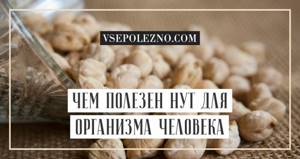
It should be noted that while chickpeas and hummus have similar nutrient profiles, they are often not nutritionally equivalent (see table). For example, heat processing of hummus can change the profile and bioavailability of some nutrients. Over the past decade, the hummus market has grown to more than $530 million.
In the US alone, sales as of 2013 have increased by more than 25% since 2010. This may be due in part to increased consumer acceptance of legumes and their derivative products. Hummus, thanks to its chickpea content, is a source of not only protein, but also dietary fiber, resistant starch, polyunsaturated fatty acids, vitamins and minerals, especially folate, calcium, magnesium and potassium.
Four tablespoons (~100 kcal) of traditional chickpea hummus per day provides approximately 2 cups of legumes per week and ~25 grams of dietary fiber, which compensates for nutritional deficiencies in the diets of many adults and children. Raw or cooked chickpeas and hummus also contain dietary bioactives such as phytic acid, sterols, tannins, carotenoids and other polyphenols, the benefits of which may extend beyond basic human nutritional needs.
| Nutritious | Unit | Value in 100 g | ||
| Dry chickpeas | Boiled chickpeas | Hummus | ||
| Macronutrients | ||||
| Energy | Kcal | 378 | 164 | 166 |
| Protein | G | 20.47 | 8.86 | 7.90 |
| Fats | G | 6.04 | 2.59 | 9.60 |
| Carbohydrates | G | 62.95 | 27.42 | 14.29 |
| Cellulose | G | 12.2 | 7.6 | 6.0 |
| Sugar | G | 10.7 | 4.8 | Well |
| Minerals | ||||
| Calcium | mg | 57 | 49 | 38 |
| Iron | mg | 4.31 | 2.89 | 2.44 |
| Magnesium | mg | 79 | 48 | 71 |
| Phosphorus | mg | 252 | 168 | 176 |
| Potassium | mg | 718 | 291 | 228 |
| Sodium | mg | 24 | 7 | 379 |
| Zinc | mg | 2.76 | 1.53 | 1.83 |
| Copper | mg | 0.656 | 0.352 | 0.527 |
| Manganese | mg | 21.306 | 1.030 | 0.773 |
| Selenium | mcg | 0 | 3.7 | 2.6 |
| Vitamin complex | ||||
| Vitamin C | mg | 4.0 | 1.3 | 0 |
| Thiamine | mg | 0.477 | 0.116 | 0.180 |
| Riboflavin | mg | 0.212 | 0.063 | 0.064 |
| Niacin | mg | 1.541 | 0.526 | 0.582 |
| Pantothenic acid | mg | 1.588 | 0.286 | 0.132 |
| Vitamin B6 | mg | 0.535 | 0.139 | 0.200 |
| Folate | mcg | 557 | 172 | 83 |
| Kholin | mg | 99.3 | 42.8 | Well |
| Vitamin B12 | mcg | 0 | 0 | 0 |
| Vitamin A | ME | 67 | 27 | 30 |
| Vitamin d | mcg | 0 | 0 | 0 |
| Vitamin K | mcg | 9.0 | 4.0 | Well |
| Vitamin E | mg | 0.82 | 0.35 | Well |
| Fat | ||||
| Saturated | G | 0.603 | 0.269 | 1.437 |
| Monounsaturated | G | 1.377 | 0.583 | 4.039 |
| Polyunsaturated | G | 2.731 | 1.156 | 3.613 |
Chickpeas are easy to add to your diet
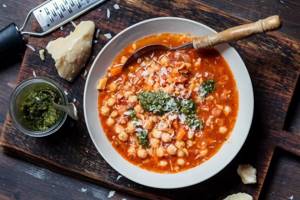
Chickpeas are incredibly easy to incorporate into your diet. This product is quite affordable and convenient. Most grocery stores sell it in dry and canned forms.
Moreover, chickpeas are versatile and can be used in a variety of dishes. One popular way to consume it is by adding it to salads, soups or sandwiches.
It is also the main ingredient in hummus, which is a chickpea puree snack made with tahini, olive oil, lemon juice, salt and garlic. You can buy hummus at the store or make your own.
Another way to enjoy chickpeas is by roasting them to create a delicious and crunchy snack. You can also include it in veggie burgers or tacos.
Due to their high protein levels, eating chickpeas can be an excellent meat substitute.
Summary:
Chickpeas are widely available and taste great when added to a variety of recipes. It is the main ingredient in a chickpea puree snack called hummus, and is a great meat substitute due to its high protein content.
Response to glucose and insulin
Augustin LS, Chiavaroli L., Campbell J., Ezatagha A., Jenkins AL, Esfahani A., Kendall CW Post-prandial glucose and insulin responses of hummus alone or combined with a carbohydrate food: A dose-response study. Nutr. J. 2016;27:13.
Men who ate chickpeas or lentils with pizza had lower blood glucose responses compared to those who ate yellow peas with pizza. In a study by Yang et al. Chickpeas have been shown to significantly improve insulin resistance and prevent postprandial hyperglycemia and hyperinsulinemia induced by chronic high-fat diet in rats.
Mollard RC, Luhovyy BL, Panahi S., Nunez M., Hanley A., Anderson GH Regular consumption of pulses for 8 weeks reduces metabolic risk syndrome factors in overweight and obese adults. Br. J. Nutr. 2012;108(Suppl. 1):S111–S122Yang Y., Zhou L., Gu Y., Zhang Y., Tang J., Li F., Shang W., Jiang B., Yue X., Chen M.
Dietary chickpeas reverse visceral adiposity, dyslipidemia and insulin resistance in rats induced by a chronic high-fat diet. Br. J. Nutr. 2007;98:720–726. Hodge AM, English DR, O'Dea K, Giles GG Dietary patterns and diabetes incidence in the Melbourne Collaborative Cohort Study. Am. J. Epidemiol. 2007;161:2573–2578. Villegas R, Gao YT, Yang G, Li HL, Elasy TA, Zheng W. Legume and soy food intake and the incidence of type 2 diabetes in the Shanghai Women's Health Study. Am. J. Clin. Nutr. 2008;87:162–167.
Traditional hummus has 4-5 times the fat content of chickpeas alone, which may be due to improved blood glucose and insulin response, as dietary fat delays gastric emptying and therefore slows carbohydrate absorption. Hummus has about half the glycemic index of chickpeas, which could partly explain why the study with hummus showed a greater reduction in blood glucose levels compared to the studies with chickpeas.
Atkinson FS, Foster-Powell K., Brand-Miller JC International tables of glycemic index and glycemic load values: 2008. Diabetes Care. 2008;31:2281–2283.
Chickpea salad with beets and pomegranate
Oriental chickpeas also look perfect in Mediterranean dishes. Make this quick (only 20 minutes to prepare!) salad with feta cheese, vegetables and balsamic vinegar for dinner. To turn this vegetarian recipe vegan, replace the feta cheese with tofu or olives.
- Boiled chickpeas 1.5 tbsp.
- Cherry tomatoes, cut in half 1 tbsp.
- Red onion, cut into half rings 1/2 pcs.
- Cucumber, diced 1 tbsp.
- Shredded feta cheese 1/4 tbsp.
- Chopped parsley 1/2 tbsp.
- Olive oil 1 tbsp. l.
- Balsamic vinegar 1 tbsp. l.
- Lemon juice 2 tbsp. l.
- Salt, pepper to taste
This salad is perfect for being a stand-alone dish: fresh and light, but at the same time quite filling, it will be your ideal healthy dinner.
- Chickpeas 1 tbsp.
- Pomegranate seeds, seedless 1/2 tbsp.
- Beetroot 2 pcs.
- Purple onion 1 pc.
- Olive oil to taste
- Lemon juice to taste
- Cilantro1/2 bunch
- Salt, pepper to taste
Another salad in our selection: this time we decided to prepare it with avocado, radishes and other summer products. Chickpeas are responsible for the protein and nutritional component, and the other ingredients perfectly complement it and create a very special taste.
- Boiled chickpeas400 g
- Cucumber, randomly chopped 1 pc.
- Radishes, randomly chopped 6 pcs.
- Brussels sprouts8 pcs.
- Shredded feta cheese 3/4 tbsp.
- Apple cider vinegar 1/3 tbsp.
- Olive oil 2-3 tbsp. l.
- Salt, pepper to taste
- Avocado, randomly chopped 1 piece
- Pumpkin seeds to taste
- Honey to taste
Chemical composition
The nutritional value of chickpeas is provided by the incoming chemical components. Amount of ingredients per 100 grams of dry cereal:
- protein 20.0 g;
- fats 4.9 g;
- carbohydrates 61.0 g;
- dietary fiber 9.8 g;
- starch 41.0 g;
- ash 3 g;
- 7 g saturated and 2.9 g polyunsaturated fatty acids;
- 3 g mono- and disaccharides.
The table shows the composition of vitamins and microelements.
| Amount of nutrients per 100 grams of dry chickpeas | |||
| Vitamins | Minerals | ||
| B1(thiamine) | 0.1mg | Manganese | 2 mg |
| PP (niacin) | 3.3 mg | Iron | 2.5 mg |
| C (ascorbic acid) | 4 mg | Selenium | 28.1 mg |
| A (retinol) | 15 mcg | Iodine | 3.2 mcg |
| B6 (pyridoxine) | 0.5 mg | Bor | 0.6 mg |
| TO | 33 mg | Zinc | 2.8 mg |
| Beta carotene | 0.09 mg | Magnesium | 123 mg |
| B 9 (folic acid) | 650 mcg | Calcium | 190 mg |
| Potassium | 966 mg | ||
| Chlorine | 48 mg | ||
| Sodium | 70 mg | ||
| Sulfur | 191 mg | ||
| Molybdenum | 60 mg | ||
| Silicon | 90 mg | ||
| Phosphorus | 1215 mg | ||
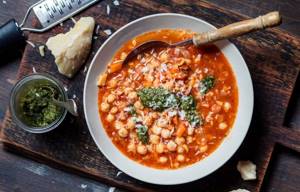
It contains potassium and magnesium necessary for the heart. In terms of the amount of healthy fats, peas surpass all other legumes except soybeans. Contains omega-3 and omega-6. It contains amino acids necessary for life - methionine, tryptophan, lysine.
Studying the nutritional value of nohut, the conclusion suggests itself that it is a high-carbohydrate product, rich in proteins and fatty acids.
